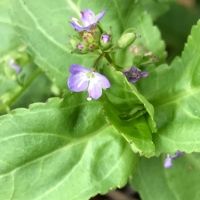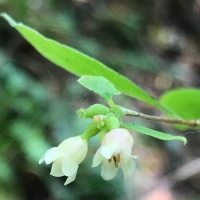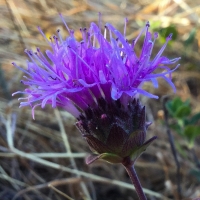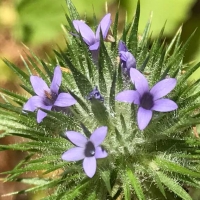NEW
– American speedwell, a pretty purple flower grows in moist seeps.
– Common snowberry is a shrub with white pink flowers and oval leaves.
– Coyote mint with a purple tuft flower is blooming on the knoll below Homestead Hill.
– Skunkweed has small purple flowers in a spiky flower head.
Forests
– Alum root, with frothy white bell flowers and geranium-looking foliage, blooms in cool seeps.
– American trailplant blooms with a small white flower at the top of a tall stalk above a bed of arrow shaped leaves.
– California coffeeberry shrub is blooming in forests with clusters of white flowers.
– California honeysuckle is blooming with pink flowers on vines climbing bushes and trees.
– California spikenard is blooming along creeks in forests with spherical balls tipped with white flowers.
– Forget-me-not*, native of Europe, is one of the most invasive plants of the Homestead forest. Its seeds form small burrs that animals spread deep into wild areas. Please, pull forget-me-nots wherever you see them; if they have seeds, carry out and dispose.
– Hedgenettle, a mint, blooms in purple rounds up a stalk in forests.
– Hellebore*, an orchid, is native to Eurasia and is blooming now in forests with stalks of greenish purple flowers.
– Ocean spray blooms white with frothy pendulous clusters in forests.
– White hawkweed blooms at the end of long stalks with white flowers.
– Wood sweet-cicely, found throughout the forests of Homestead blooms with small white flowers.
– Woodland madia’s bright yellow flowers bloom in forests.
Forest edges
– Buckeye trees are starting to bloom with large clusters of white flowers. Lining our roads, they make a beautiful display when fully blooming.
– Creeping snowberry’s little pink flowers are blooming on this small bush at forest edges.
– Featherweed blooms with brown tufts at forest edges.
– Figwort blooms with a distinctive shaped rust red flower on a nettles-looking plant. Another roadside wildflower, look for it along wooded road cuts down at the start of Reed and throughout the forests. An important plant for bees and butterflies.
– Latin American fleabane*, native of Central America, has colonized a small area below Amaranth.
– Milkwort blooms with purple irregular shaped flowers.
– Wavyleaf soap plant blooms with open white stars on long stalks. Pollinated by moths, the flowers open late in the day.
Meadows
– American wild carrot blooms with a broad tight cluster of white.
– Blue eyed grass is blooming with glossy purple flowers in meadows.
– Bluff lettuce, a succulent, is blooming with yellow flowers on red stalks.
– California everlasting has clusters of tight white flowers and blooms in meadows.
– California poppy, orange and bright, it’s starting to bloom now and will continue late into the summer.
– Common yarrow with its tight white umbel is blooming in full sun on the ridge.
– English plantain*, native of Eurasia, tall stalk is blooming with a white corolla.
– Harvest brodiaea blooms with rich purple open flowers in meadows.
– Ithuriel spear, open clusters of purple flowers on a tall stalk, are starting to bloom in meadows.
– Lance leaf selfheal is blooming in bright sun with rich velvety purple whirled clusters.
– Naked buckwheat blooms in pink clusters on rock outcrops in meadows.
– Narrow-leaf bird’s foot trefoil*, native of Europe, is blooming bright yellow on the ridge of Homestead Hill.
– Narrowleaf cottonrose*, a naturalized native of the Mediterranean region is blooming on the ridge of Homestead Hill.
– Pineapple weed grows on Homestead Fire Road, releasing its chamomile scent as you crush it underfoot.
– Purple western morning glory, a vine with pink to cream trumpet flowers is blooming on the ridge of Homestead Hill.
– Poison hemlock*, native of Europe has a delicate white umbel and mottled red stems. Poisonous, use gloves when weeding.
– Purple clarkia is blooming with small purple cups in meadows.
– Redstem filaree*, native of Eurasia, is blooming with its pretty pink flowers in full sun.
– Sticky monkeyflower with its orange flower blooms in sunny spots and will bloom all summer.
– Tocalote*, native of the Mediterranean region is an invasive weed found in meadows another unfortunate byproduct of ranching.
Key to map:
I haven’t located plants on on the map if they are very prolific. Find them by their habitat.
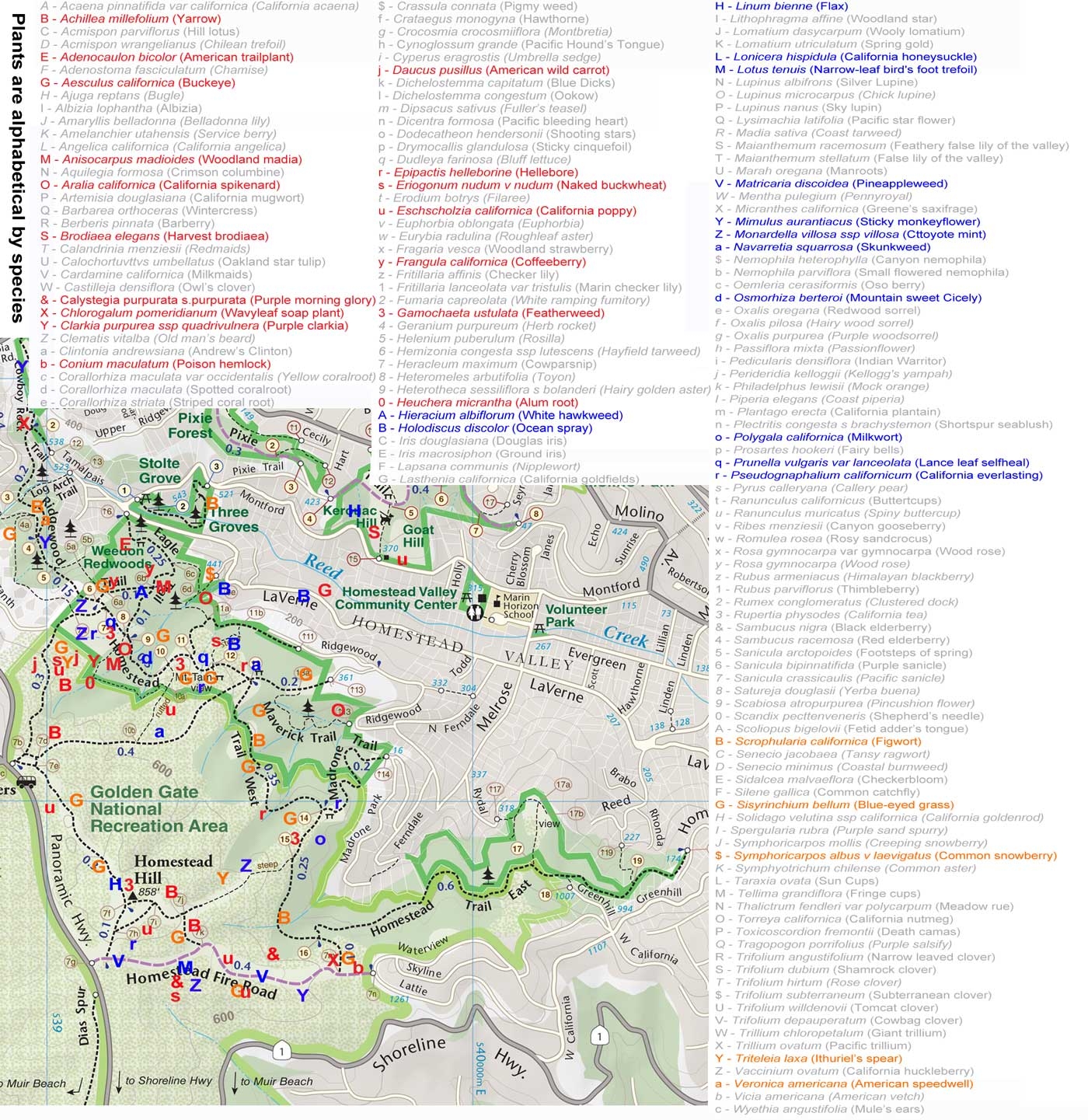
Gallery of wildflowers and plants found in Homestead.
*Non-native
Share this: